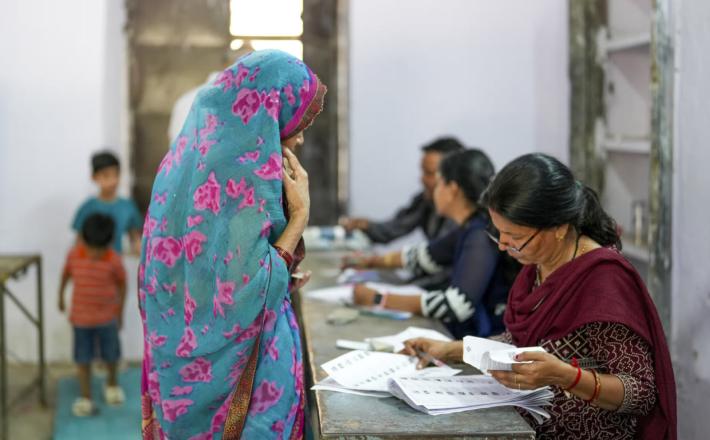‘I want to decide my vote for myself’: how women are shaping India’s political landscape
Source: The Guardian
Basanti Sabar, 30, is a third-time voter. But this time round, as the eastern Indian state of Odisha goes to the polls in simultaneous general and assembly elections, the former migrant worker will make a crucial shift in the way she votes.
In patriarchal rural India, who the family vote for is usually decided by the men. On 13 May, however, Sabar and other women in Padampur village will for the first time vote for a candidate of their choice – a shift that is influencing the way state and national politicians speak to women in their manifestos.
Padampur, in the drought-stricken Kalahandi district of western Odisha, is one of India’s most impoverished villages, whose people have for decades been compelled to migrate to make a living. Today, the men still leave, but the women, who have discovered financial independence in Odisha’s successful self-help group (SHG) movement, which offers them loans and benefits from state schemes, now stay put.
This newfound independence is changing what men and women want from politicians. Padampur’s men have their hopes pinned on broad-based changes such as more jobs and better incomes, which they believe only a national party can deliver. However the women, bolstered by the income available to them through loans and self-help schemes, support the state government, run by a regional party.
The government’s Economic Survey 2022-23 mentions that India’s female-led SHGs were emerging as the world’s biggest microfinance project. According to the survey, the SHG-Bank Linkage Programme, which helps poorer Indians access microfinance through self-help groups and banks, covers 142 million families with saving deposits of Rs 470bn (£4.5bn).
Read here the full article published by The Guardian on 10 May 2024.
Image by The Guardian
.

Basanti Sabar, 30, is a third-time voter. But this time round, as the eastern Indian state of Odisha goes to the polls in simultaneous general and assembly elections, the former migrant worker will make a crucial shift in the way she votes.
In patriarchal rural India, who the family vote for is usually decided by the men. On 13 May, however, Sabar and other women in Padampur village will for the first time vote for a candidate of their choice – a shift that is influencing the way state and national politicians speak to women in their manifestos.
Padampur, in the drought-stricken Kalahandi district of western Odisha, is one of India’s most impoverished villages, whose people have for decades been compelled to migrate to make a living. Today, the men still leave, but the women, who have discovered financial independence in Odisha’s successful self-help group (SHG) movement, which offers them loans and benefits from state schemes, now stay put.
This newfound independence is changing what men and women want from politicians. Padampur’s men have their hopes pinned on broad-based changes such as more jobs and better incomes, which they believe only a national party can deliver. However the women, bolstered by the income available to them through loans and self-help schemes, support the state government, run by a regional party.
The government’s Economic Survey 2022-23 mentions that India’s female-led SHGs were emerging as the world’s biggest microfinance project. According to the survey, the SHG-Bank Linkage Programme, which helps poorer Indians access microfinance through self-help groups and banks, covers 142 million families with saving deposits of Rs 470bn (£4.5bn).
Read here the full article published by The Guardian on 10 May 2024.
Image by The Guardian
.